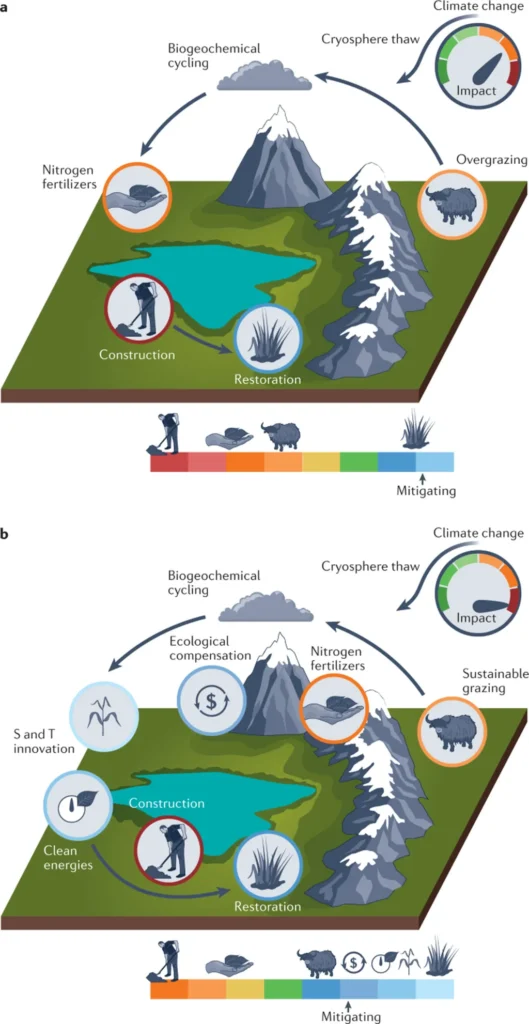In the vast, windswept expanses of the Qinghai-Tibet Plateau, a silent battle is unfolding beneath our feet. As alpine grasslands degrade, the microbes in the soil are fighting to adapt, and their responses could hold the key to understanding—and potentially mitigating—soil carbon loss. This is the focus of a recent study published in *Geoderma*, led by Xiaobo Yuan of Lanzhou University, which sheds light on the intricate dance between soil microbes and their environment.
Grassland degradation is a global concern, with significant implications for carbon cycling. The study establishes a degradation gradient—from non-degraded to heavily degraded—in both alpine meadows and steppes. The researchers found that as degradation increases, the stoichiometric imbalances between soil microbes and their resources shift dramatically. “We observed a hump-shaped response in C:N stoichiometric imbalance, peaking around moderate degradation, while C:P and N:P imbalances decreased with increasing degradation,” explains Yuan. This means that as grasslands degrade, the balance of carbon, nitrogen, and phosphorus in the soil changes, forcing microbes to adapt their metabolism.
The study reveals that microbial responses to these imbalances are ecosystem-specific. In meadows, microbes maintain strong C:N:P homeostasis, while in steppes, they exhibit weaker C:N and C:P homeostasis, indicating higher stoichiometric plasticity. “This suggests that meadow microbes are more rigid in their nutrient requirements, while steppe microbes are more flexible,” says Yuan. This flexibility or rigidity in microbial response has direct implications for soil organic carbon (SOC) stock. The researchers found that microbial metabolic adjustments—such as changes in extracellular enzyme production and nutrient mineralization rates—are strongly correlated with SOC loss.
The commercial impacts of this research are substantial. Understanding how microbes respond to degradation can help agricultural practices become more resilient. For instance, targeted interventions could enhance microbial flexibility in degraded soils, potentially slowing SOC loss. “By manipulating soil nutrient balances, we might be able to steer microbial activity towards preserving soil carbon,” suggests Yuan. This could be particularly relevant for high-altitude ecosystems, which are particularly vulnerable to climate change.
The study also highlights the importance of ecosystem-specific strategies. “One size does not fit all when it comes to managing degraded grasslands,” Yuan emphasizes. This nuanced understanding could guide more effective land management practices, tailored to the unique needs of different ecosystems.
Looking ahead, this research could shape future developments in agritech and soil management. By integrating microbial stoichiometry into land management practices, we could develop more sustainable and resilient agricultural systems. “The next step is to translate these findings into practical applications,” says Yuan. This might involve developing microbial inoculants or precision nutrient management tools to enhance soil health and carbon sequestration.
In the fight against grassland degradation, understanding the microscopic world beneath our feet is crucial. As Yuan and his team have shown, the responses of soil microbes to stoichiometric imbalances are a critical factor in regulating SOC loss. By harnessing this knowledge, we can work towards more sustainable and resilient agricultural practices, ensuring the health of our soils and the ecosystems they support.

